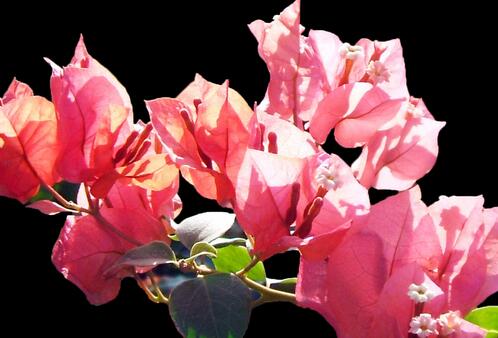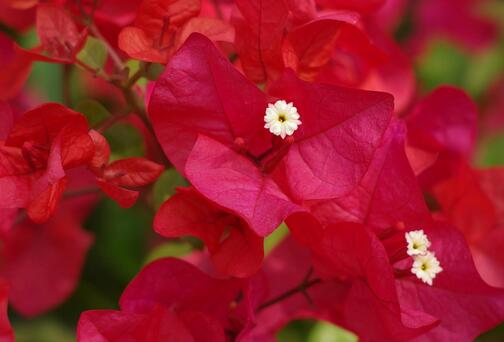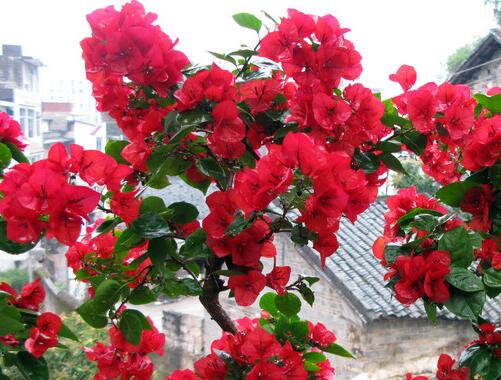How long does the cuttage of Prunus mume take root? why doesn't it always take root?
How long does the cuttage of Prunus angustifolia take root? In May and June, trimmed plum cut mature woody branches, 20 cm long, inserted into a sand basin, covered with glass, kept moist for about a month to take root, and cultivated for two years to blossom. Then why don't triangulated plum cuttings always take root? The following editor brings you the details.

How long does the cuttage of Prunus mume take root:
@ Bamboo Leaf even
Generally one month to one and a half months can root, and season, temperature, material, management level.
@ Pearl edge
The toothpick I inserted took root in the fastest 20 days and took more than a month to take root.
@ full of flowers
It took me several months for the flowers to sprout. Please wait patiently.
Triangulated plum cuttings are always not rooted how to maintain:
Selective cultivation soil
The requirement for soil is not strict, but it is afraid of stagnant water and is not resistant to waterlogging, so we must choose loose and well-drained culture soil. Generally, we can choose 4 parts of humus soil, 4 parts of garden soil and 2 parts of sand. Sun-dried pond mud mixed with some coal cake residue can also be used as basin soil.
Evergreen shrub, bright red flowers, larger flowers, every 3 bracts together a small triangular flower, also known as triangular flower. Light leaf flowers like warmth and sufficient light, not cold-resistant, avoid waterlogging. [8] it is suitable to grow in rich, loose and well-drained sandy soil, and not only grow poorly in heavy, alkaline, low-humidity and waterlogged soil, but also easily rot roots and die. 4 parts of rotten leaf soil, 2 parts of garden soil, 1 part of rotten barnyard manure, 1 part of sawdust and 2 parts of river sand should be prepared, and 30g of rotten dumpling fertilizer should be mixed into the basin as base fertilizer.
Certain nutrients are needed, and proper fertilization should be carried out during the growing period in order to meet the needs of its growth. Fertilizer should be mature, fertilization should be a small amount for many times, the concentration should be light, otherwise, it is easy to damage the root system and affect the growth. Starting from May, 10%-15% cake fertilizer solution is applied every half month to promote spring shoot growth; in the high temperature season from July to August, 10% cake fertilizer liquid and a small amount of calcium superphosphate or a small amount of compound fertilizer solution should be applied every 15 to 20 days; less nitrogen fertilizer should be applied after September, and coke mud ash and a small amount of calcium superphosphate can be used to promote bright red and beautiful bracts. The bare-leaf flower needs less water than other flowers, as long as the pot soil is not dry or wet during the growing period. [9]
adequate manuring
In order to make it blossom, we must ensure adequate nutrients, and fertilization should be timely, appropriate and rational use. In general, during the peak growth period from April to July, liquid fertilizer is applied every 7 to 10 days to promote plant growth. Fertilizer can be used with 10%-20% cooked bean cake, rapeseed cake water or human feces water. Since August, in order to promote the gestation of flower buds, fertilizer based on phosphate fertilizer has been applied every 10 days, and 20% liquid fertilizer such as rotten chicken, duck, pigeon dung and fish can be used. From October to mid-November, it is necessary to apply phosphate fertilizer every half a month, and the concentration of fertilizer and water is 30% to 40%. In the future, topdressing should be applied once after each flowering, so that the flowering period can be replenished continuously. [9]
Water control before flowering
At ordinary times, we should master the principle of "do not dry, do not water, water should be thoroughly". However, in order to bloom neatly and more, water control must be carried out before flowering. The watering of Pueraria lobata has been controlled since September. Each watering can be carried out repeatedly for half a month after the basin soil is dry and the branches and leaves are soft and sagging, and the normal watering can be resumed after half a month. Do not apply fertilizer during the water control period, so as not to burn the root system. In this way, it takes about a month to bud and blossom, and the flowers bloom neatly and flourish.
Loosen the soil and change the basin
Due to long-term watering, fertilization and Rain Water erosion, the basin soil is easy to harden, so it is necessary to loosen the soil regularly and remove weeds in the basin soil to facilitate the growth of Pueraria lobata. Otherwise, basin soil hardening, stagnant water, easy to cause root rot or poor growth. In addition, the glabrous cotyledon grows faster, the root system is well developed, and there are many whisker roots, so the pot needs to be changed once a year.
[figure] cutting method and cultivation time of Prunus mume
Triangular plum has many varieties, beautiful leaves, long flowering period, drought and heat resistance, so it has become the first choice of Yangtai people. The main propagation method of Prunus mume is cutting, and the survival rate is high.
Triangulated plum cutting method 1. Triangulated plum cutting preparation (medium, branch)
The cutting medium should be vermiculite, perlite + vermiculite, clean sand, sandy loam (plain soil). Put it in a basin and soak it in boiling water for several times before use and use after cooling. It can also be inserted with water.
The branches of triangular plum, as thick as arms and as thin as incense, can be used for cutting; coarse branches have late roots and take shape quickly; annual lignified green branches are easy to grow new roots and have a high survival rate.
2. Cutting time of Prunus mume
Master seasonal cuttings. Hangzhou cuttings are best before mildew in late May to early June. (there are differences in different places, if there is an article that Hainan is the best in March of the following year in October, both in spring, summer and autumn in Fuzhou.) at this time, the temperature is suitable (20-30 degrees), high humidity and convenient management.
3. When triangulated plum is cut
First, use a small stick thicker than the cuttings on the substrate, and punch holes obliquely on the substrate. Insert cuttings with a depth of about 4-6cm, and water them in a slightly shady place for maintenance.
4. Post-cutting management of Prunus mume
The light should be suitable: see sparse light within 15 days, (should not be too shady, sunshade is about 50%), gradually strengthen the illumination, grow new roots in 20-30 days, and shine all day for about 25 days; only by fully receiving sunlight can you make the new roots strong.
Moisturizing: if the weather is dry within 20 days, keep the fresh-keeping film moisturizing and keep the ventilation hole. Open the ventilation in the evening, spray water and cover it again.
Extra-root fertilization: spray 1/1000 potassium dihydrogen phosphate + urea once in about ten days.
Watering: keep the substrate moist in the early stage (the air humidity is about 70%) and gradually "dry and wet" after 40 days.
5. Triangulated plum cuttings on the pot
The seedlings that survived after cutting for 40 days were refined in strong sunlight for a week and fertilized thinly. After 50-60 days, the cuttings were planted in a pot, and the cuttings were placed in a basin to drift away the matrix from the root, or directly poured out the root and separated with part of the matrix into the culture soil.
Step 1: soil treatment for cuttage of Prunus mume
First of all, prepare the cutting substrate. Vermiculite, perlite, peat, 1:1:1. Sand, plain sand loam, etc.)
Add a small amount of slag to the culture soil, sift the slag before cutting, select particles of about 2 to 5 mm, soak in boiling water and disinfect. Control the water to cool and dry until it is not dripping, then stir thoroughly and set aside.
2. Prepare the flowerpot
If you need to cut multiple pots, you can use a simple plastic pot, and put it on the pot after the cutting is successful. After selecting the flowerpot, you need to load the soil, and you can also put some elastic catkins or cotton on the bottom of the flowerpot.
After the soil is installed, water it thoroughly, put it in the sun and let it dry.
3. Branch cutting
Cut the sunny branches as cuttings, and the new branches had better bring some old ones. After June, the semi-lignified new branch does not need to bring the old branch. Cut the cuttings, the old branches should be thick, and there are new branches with leaves.
Cut the cuttings with a sharp knife, leaving two leaves with two large leaves, and the small leaves with two leaves and one bud, about 7-10cm, cut off the base of the branch, the cut mouth is uneven, the tissue is damaged, cut off the damaged tissue with a sharp knife, and cut the base into a bevel with one knife. The picture below is the arranged branches.
4. Soak the branches
Prepare the rooting powder according to the instructions and soak the base of the cuttings. Cuttings of Prunus mume: soaking branches
5. Triangle plum cuttage
Punch the hole obliquely with a clean (sterilized) stick, 7-8cm deep, and then bury the cuttings to expose the nodes of the remaining leaves.
Insert a basin and pour the water thoroughly so that the matrix is in close contact with the base of the cuttings, covered with fresh-keeping film and moisturized, with air holes and places illuminated by scattered light.
Triangular plum plus plastic film humidified seedlings have survived and were planted in the basin.
How to cut Prunus mume how to cut Prunus mume
Triangular plum, alias kudzu, three-leaf plum, leaf flower and so on, is often used as bonsai or gardening. Do you know how to cut triangular plum? Next, let's take a look at the cuttage method of triangular plum.
The main results are as follows: 1. the best cutting time is spring and summer and autumn. In spring (March to April), the pruned annual branches can be used for cutting (also known as old cutting), but the survival rate is not too high, only about 70%. Summer and autumn is the peak growing season of triangulated plum, so the semi-lignified branches of the same year are selected for tender cutting, and the survival rate can reach more than 90%. As long as the management is strengthened, it can blossom in that year.
2. The cutting substrate is relatively random, and flower friends can use local materials. The matrix can choose coarse sand, fine sand, sandy loam with good permeability, loose soil that is not too fertile, or mashed and burnt briquette, cinder and so on. Then add 0.1% carbendazim for disinfection, accumulate the soil and cover it with a film for 7-10 days. The slotting machine is 1-1.2 meters wide, 15-20 centimeters high and unlimited in length.
3. In the treatment of cuttings, short and stout annual branches with short internodes were cut into 8-10 cm long, leaving only 2-3 leaves on the cuttings. Treatment with rooting element before cutting can promote its early rooting and more rooting.
4. The suitable cutting depth is 3 to 4 cm (equivalent to 1 / 3 or 2 / 5 of cuttings). Before inserting, punch the hole with the insertion rod, then insert the cuttings, and press the matrix at the base of each cuttings slightly to make the cuttings come into close contact with the matrix. Then pour the water once and cover it with a film to keep warm.
Note:
1. Try to reduce the bacterial content of cutting substrate (sand, cinder, soil, etc.). Sand can be disinfected by various methods, such as sun exposure, boiling water, potassium permanganate or carbendazim sterilization and so on. Cinder should be fresh. Pot edge cutting should try to reduce the use of immature organic fertilizer and high concentration of chemical fertilizer, reduce the chance of carrying bacteria and root damage.
2. Keep it in a cool place to reduce water evaporation.
3, pay attention to keep moist, but not too much moisture, too much water is easy to breed mold, and bad for hair roots.
3. Prunus angustifolia is a southern flower, which is suitable to grow in the soil environment of pH 6.0 to 7.0. The soil and water in the north are alkaline, and ferrous sulfate solution can be applied once a month.
- Prev

When is the best time for cuttage of Prunus mume?
Triangulated plum cutting is a very popular and important method of triangulated plum propagation, and there are a variety of cutting methods. Generally used cutting substrate requires loose ventilation, no immature organic matter and no salt. Today, the editor brings you the cutting time of Triangle Plum. Let's take a look at the details.
- Next

When to change the basin of triangular plum and its daily maintenance
The triangular plum blossom has large bracts, bright colors and a long flowering period, so it is very suitable for garden planting or potted ornamental. Many flower lovers have farming, but some of them are lack of experience in raising triangular plum for the first time. They do not know when the triangular plum will change pots, for fear that something will go wrong if the season is not right.
Related
- Fuxing push coffee new agricultural production and marketing class: lack of small-scale processing plants
- Jujube rice field leisure farm deep ploughing Yilan for five years to create a space for organic food and play
- Nongyu Farm-A trial of organic papaya for brave women with advanced technology
- Four points for attention in the prevention and control of diseases and insect pests of edible fungi
- How to add nutrient solution to Edible Fungi
- Is there any good way to control edible fungus mites?
- Open Inoculation Technology of Edible Fungi
- Is there any clever way to use fertilizer for edible fungus in winter?
- What agents are used to kill the pathogens of edible fungi in the mushroom shed?
- Rapid drying of Edible Fungi

